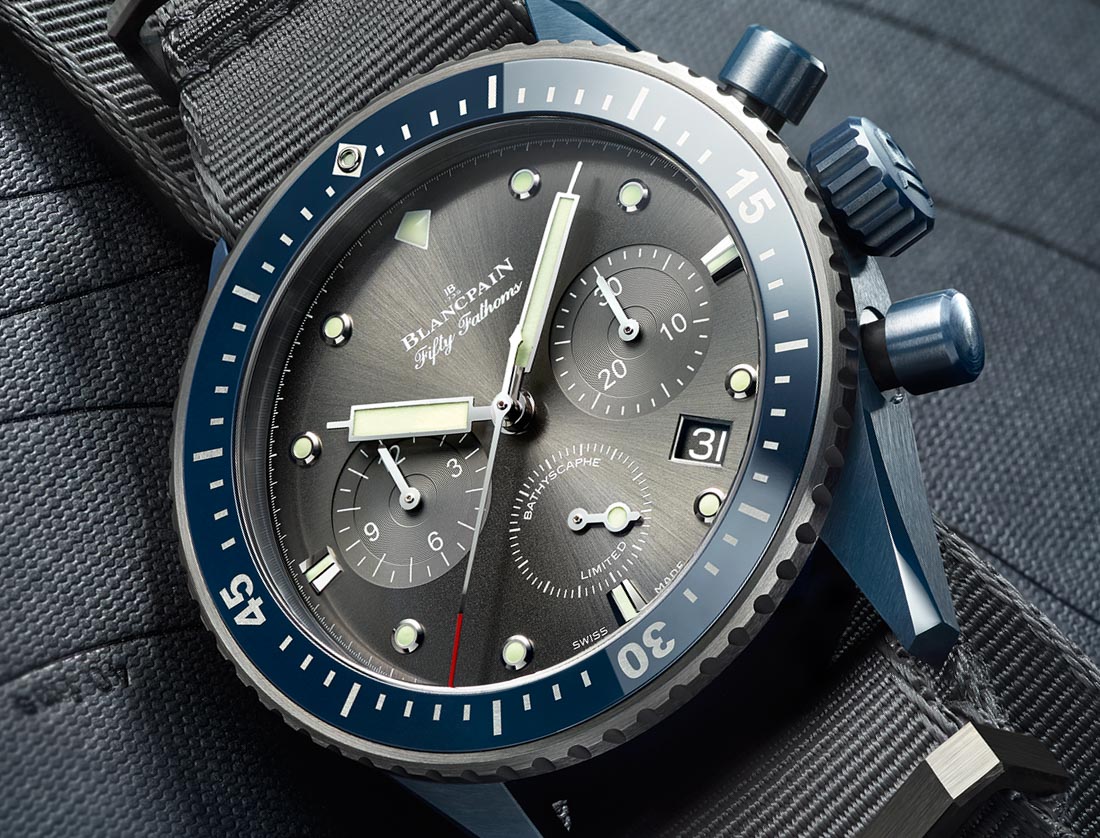By Magnus Salbu
The Blancpain Fifty Fathoms is a diving watch in its truest form, and arguably also the first specifically made for the task. Today we’ll go a bit deeper (pun intended) into how the Blancpain Fifty Fathoms came to be, and how it has evolved over more than half a century.
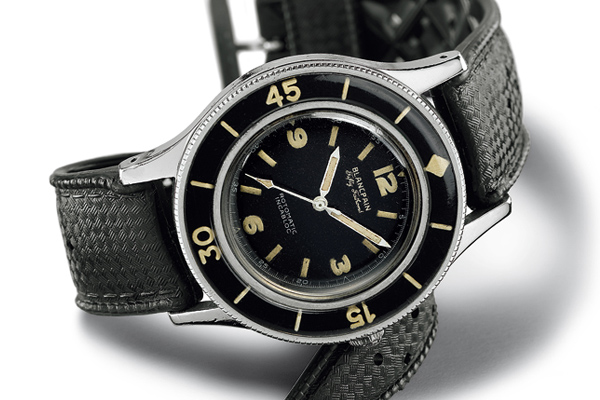
1953 Blancpain Fifty Fathoms
In 1952, when the French Ministry of Defence created the first unit of combat swimmers, or frogmen, Captain Robert Maloubier and Lieutenant Claude Riffaud had the difficult task of finding equipment good enough to survive the harsh conditions a combat swimmer would often find themselves in. They found compasses, depth gauges and watches. But they soon realized the watches that already existed were not tough enough for the task. So they set out to find a manufacture that would produce the watch they were looking for. Maloubier had already drawn up a design. A huge (for its time) 42mm watch with big, luminous markers and a rotating outer bezel. But in a time where the watch market was largely dominated by dress watches, finding someone who was willing to produce this monster of a watch would turn out to be a difficult task.
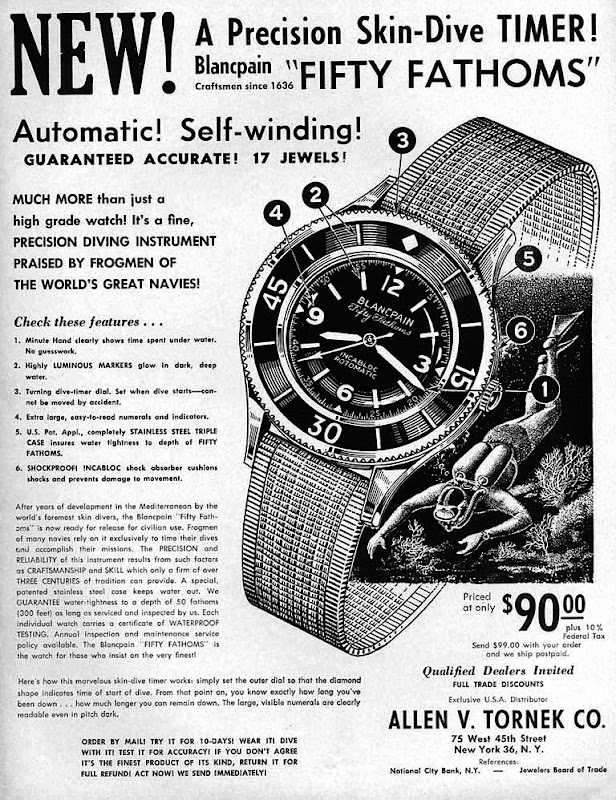
Vintage Ad for the Fifty Fathoms
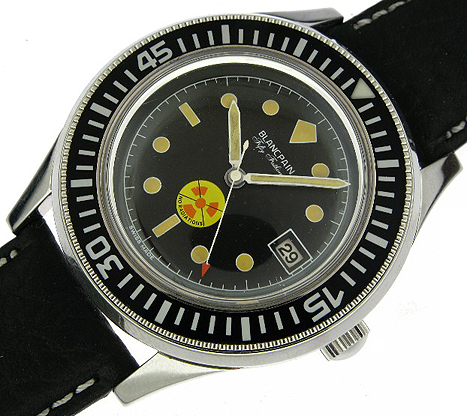
Photo: Keep The Time

Tribute to Fifty Fathoms “No Radiation” watch
Finally, they got in contact with Blancpain, whose CEO Jean-Jaques Fiechter was an avid diver. He agreed to produce their watch. The first model was finished in 1953 and presented to the public in Basel the following year. The watch proved to be very robust and reliable and many other special forces soon began using it, among them the Spanish, Israeli, American, German and even Norwegian special forces. But military forces were not the only ones to use this watch. The two main suppliers of the Fifty Fathoms were Spirotechnique and Aqualung. Sprirotechnique was the official supplier of equipment for the French naval forces. Aqualung however was a supplier of diving gear, for civilians. Aqualung was the name of Jaques Cousteau’s line of diving equipment, and the Blancpain watches that were sold in his shop bore the name “Aqualung” on the dial. From early 1950 to 1970, more than 20 different variations of the Blancpain Fifty Fathoms were made. Among them is the “No radiation” dial, this one is rather interesting.
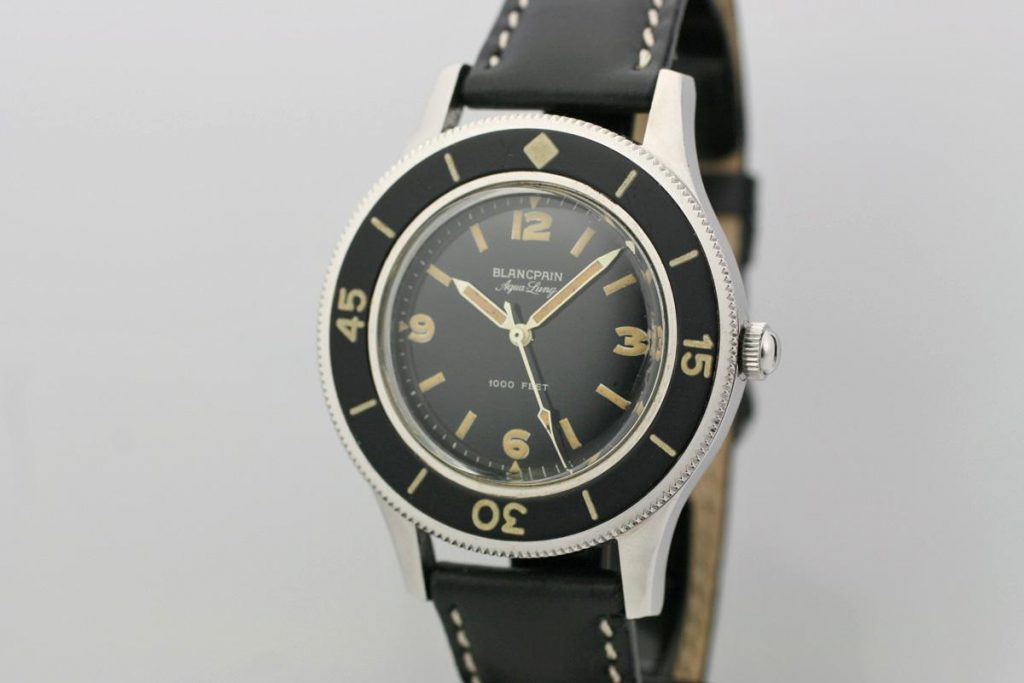
Vintage Blancpain Fifty Fathoms Aqualung Edition
One of the main criteria for the Fifty Fathoms was that it had to have a luminous dial. It was very important that even when the pressure around you reached fifty fathoms, you had to be able to read the dial. To achieve this, they had to have luminous hour markers and hands. In the military version, they used radium and Promethium 147 which were highly radioactive. The military versions even had an inscription on the back that read “DANGER. IF FOUND RETURN TO NEAREST MILITARY FACILITY”. Now this was during the cold war, and people were very paranoid about nuclear isotopes, naturally, they couldn’t use them in their watches. So for the civilian version, they made a no radiation dial. These watches used tritium instead of radium, and while tritium is still radioactive, it’s not nearly as radioactive as radium. To highlight this fact, Blancpain decided to put a huge radiation symbol with a red “X” through it. This mark was placed just above 6 o´clock.
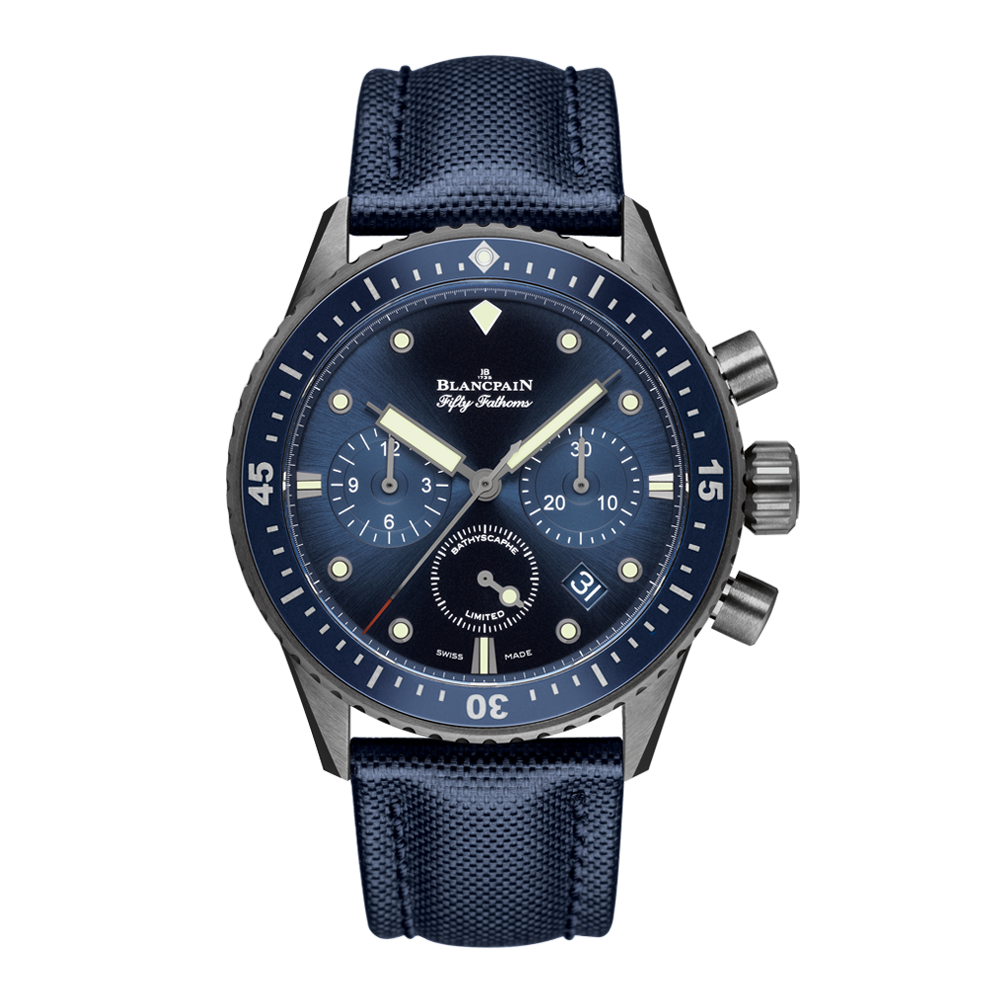
Fifty Fathoms Bathyscaphe Chronographe Flyback Ocean Commitment
In the mid 1950’s, Lip S.A, who was huge brand for luxury watches in France decided they wanted to distribute the Fifty Fathoms, despite turning down the idea in 1952 and calling the design “a portable clock without any future”. Luckily for Lip their CEO, Fred Lip, was very close to the upper management at Blancpain, and Lip distributed the watches as “Lip Blancpain”. Even Abercrombie, who at the time was a distributor of camping and outdoor sports wear, had their own Fifty Fathoms watches that they sold. The Blancpain Fifty Fathoms was, unlike today, not a watch you’d find in a fancy jewellery store. In fact, just like the Rolex Submariner, they were not considered luxury items at all. Having an expensive tool watch at the time can be compared with having an expensive and fancy drill today. This is why the Fifty Fathoms was only sold in diving and outdoor gear retailers.

Photo: WatchProSite
Quite possibly the rarest of the Blancpain Fifty Fathoms is the Fifty Fathoms that does not even carry the name Blancpain on the dial. In the 1960’s, when the American naval forces wanted to get a diving watch, they were under a very strict “Buy American” policy, so they couldn’t just import a watch from Switzerland. But one man was pushing hard to get the Fifty Fathoms to America. Allen Tornek, who had met Jean-Jacques Fiechter through their mutual passion for diving, rebranded the watches “Blancpain-Tornek” and “Tornek-Rayville” and became the official supplier for watches to the American navy. Only around 1000 watches branded “Rayville Tornek” were made, and most of them were destroyed by the Navy at the end of their service, so these are very rare today.
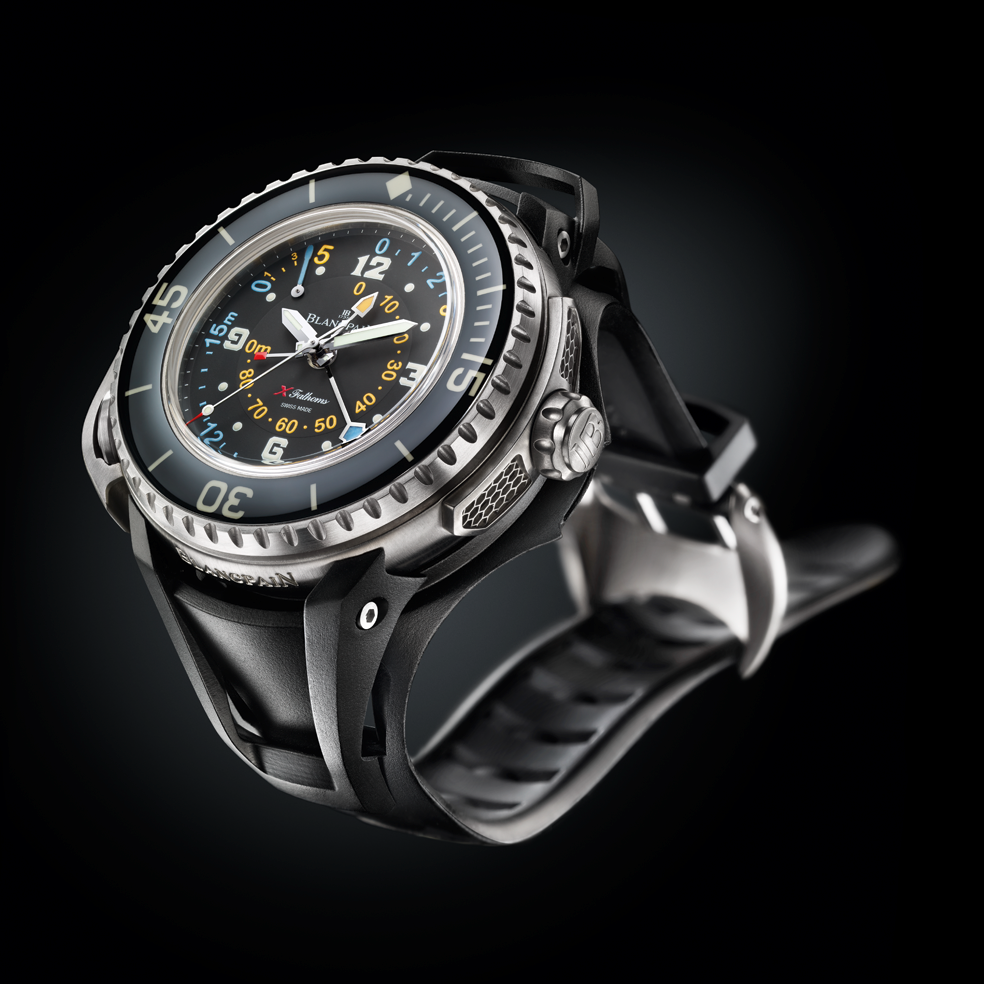 Blancpain X Fathoms
Blancpain X Fathoms
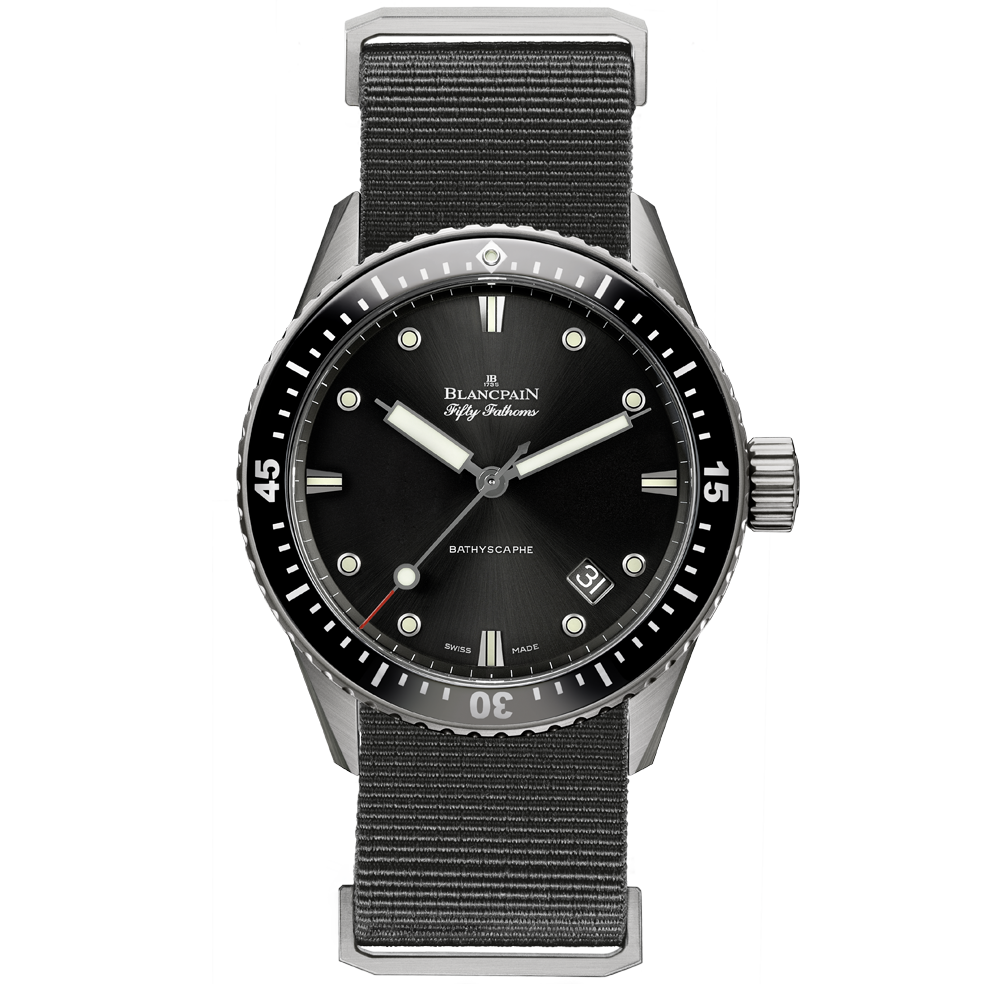
Blancpain buckled under in 1980, during the quartz crisis, but three years later, a great businessman named Jean-Claude Biver purchased the rights to the name, and in 1997, Blancpain reintroduced the Fifty Fathoms. Since that time, there have been many new variations of the model, including this 55.6mm X Fathoms model with a depth gauge incorporated in the watch’s dial. There have been reissues of the no radiation model and, my personal favorite, the 43mm Fifty Fathoms Bathyscape. The Blancpain Fifty Fathoms truly is one of the most collectible icons out there, and with more than 50 different variations of cases, dials and movements, it is near impossible to collect them all. In my opinion, one of the greatest things Biver ever did was to revive this icon, and bring it back to the surface (pun intended). For more info, please visit blancpain.com

